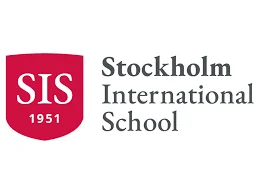The magic of learning at Stockholm International School
Teachers often need to have a few tricks up their sleeve to keep students entertained while being educated. Indeed, the magic of learning has been brought to life for primary school pupils at the Stockholm International School.

At the start of term, all classes from pre-school to grade five embarked on joint unit, entitled Learning - to inspire them for the year ahead.
“Learning is why we are here,” says David Osler, SiS primary school principal. "Since that’s our focus it’s important for pupils to understand what learning is, how we learn and different ways to learn.”
While the teachers did a temporary disappearing act in stepped a magician to the school to kick-start the two-week topic.
“Students learn best when they are excited and enthused,” says Osler. “We talked about how the magician did his tricks and what he would have to learn to perform them.”
And from there, students have explored further – everything from how the brain works and to multiple intelligences. Learning has also been shared among the age groups - fourth grade pupils taught the pre-school children how to tie their shoelaces.
It’s an example of how the school incorporates the International Primary Curriculum (IPC) into the classroom environment, with the inclusion of four individual units every academic year across each grade.
”We can’t only base our curriculum on content and knowledge, since our students are typically transient and are usually only here for two to three years,” adds Osler.
Instead, the IPC concentrates on the development of skills that are transferable, regardless of the subject. It’s a concept that plays towards the latest research on optimal ways of learning.
The IPC curriculum is modern and is constantly being adjusted and adapted based on the latest learning research. “That even goes down to individual lessons for teachers, in so far as what the key components are that enable students to learn,” says Osler.
The learning unit was inspired by an experiment last year where the whole school got involved in the timely unit topic of the Olympics.
“That was the first time we focused on the same unit across the whole primary school,” says Shabana Spangenberg, IPC coordinator.
“It created a great vibe and we really came together as a school. So, we thought, why not start the term with a focus on learning to set a springboard for the year.”
Unit topics vary from travel, dinosaurs, world celebrations, rivers and even chocolate but they all have an underlying focus on a particular skill.
Spangenberg has taught the chocolate unit, which is unsurprisingly particularly popular among students.
“Here, the main skill focus is history and primary and secondary resources,” she explains. “We look at the history of chocolate production, where the ingredients come from and find out more about the Aztecs.”
The ultimate conclusion of the chocolate unit was a taste test, with input from all over the world, thanks to the cultural diversity of the class. “It became apparent that chocolate isn’t seen as a delicacy in all countries.”
Teaching kids how to learn has proved an educational for all. “What I learned is when you get the whole school involved, there’s a buzz of excitement about involving everyone,” says Osler. “And that makes pupils motivated to learn more.”
Stockholm International School is an independent primary through to secondary school. Founded in 1951, it was the first English-speaking school to be established in the Swedish capital.
This article was produced by The Local and sponsored by Stockholm International School
This content was paid for by an advertiser and produced by The Local's Creative Studio.

Join the conversation in our comments section below. Share your own views and experience and if you have a question or suggestion for our journalists then email us at [email protected].
Please keep comments civil, constructive and on topic – and make sure to read our terms of use before getting involved.
Please log in here to leave a comment.